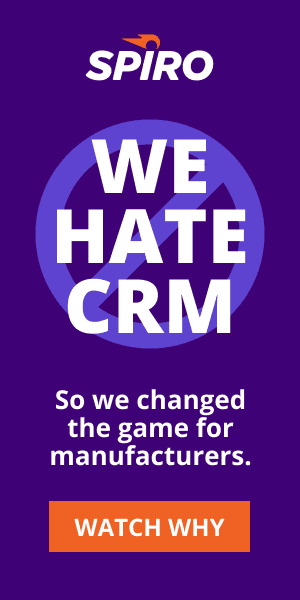7 Tips to Help You Upsell in Sales
Closing a sale is one thing, but what happens if there are multiple things you can sell to a customer? This is the art of upselling. Knowing how and when to approach a customer to upsell is full of nuanced moments that a salesperson can make advantageous. Don’t get left behind when you have the opportunity to upsell.
Here are seven tips and tricks the sales pros use when upselling:
1. Know Your Customer (And Their Needs)
It is always important to know your customer, but when it comes to upselling, knowing your customer and their needs can open new avenues to upsell. Let’s say, for instance, that a customer has just purchased your product or service, we’ll say some application that will help them better organize their sales reps (like Spiro’s proactive relationship management platform), but you have additional products that could help solve some of their other issues. If you know what their needs are ahead of time, you can work the upsell right into your original pitch, giving them the option, which you can hard-sell to them later.
2. Use Customer Loyalty to Your Advantage
According to Jill Griffin, author of the book Customer Loyalty, the probability of selling to an existing customer is 60 to 70%, meaning that if you already have a loyal customer, chances are they are going to trust you because of your established relationship with them. Which will likely result in additional sales with that customer.
Customer loyalty is highly sought after by brands, as every customer counts, and those who do repeat business with a brand builds that loyalty. If the question is how loyal do you want your customers to be, the real question is what can you be doing for your customers to build that loyalty? Whether it’s your branded marketing efforts or your face-to-face customer interactions, you have to give customers a reason to be loyal to your brand if you want them to keep doing more business with you.
3. Bundle Me This, Batman!
One of the most popular ways to upsell is to bundle your products or services. Customers appreciate the bundle because it typically includes a variety of products or services designed to meet their needs. For a quick trip down Nostalgia Lane, who remembers the bundled software packs that were available for PCs in the 90s? That was the epitome of the bundling craze.
In today’s terms, bundling can include entire products or services separate from an initial purchase to discounts on additional products or services. The most ubiquitous contemporary bundle deals belong to the telecommunications companies. Any way you slice it, bundles are still a huge part of upselling, and it doesn’t look like it’s going away anytime soon. If you can upsell using a bundle, go for it. They are generally easy sells, especially to loyal customers.
4. Adhere to the 25% Rule
According to multiple sources including Business.com, a general rule of thumb to follow is to never upsell anything beyond 25% of the original item’s cost. For example, if the customer purchases something at $100, the item you try to upsell them should not exceed $125. This keeps the customer from an initial sticker shock (say, if you tried to upsell them on something priced at $200). It’s likely that they’ll pass on something that is twice the cost of their original purchase.
5. Know the Difference Between Upselling and Cross-selling
This one can be tricky because the terms “upsell” and “cross-sell” are used interchangeably, and many mistake one for the other. So which is it? Upselling is when you are trying to include additional purchases into the original purchase, whereas cross-selling is when you are trying to sell additional items in conjunction with the original sale.
Despite the nuances, you have to know when it’s the right time to use each. This also goes back to knowing your customer. The better you know what they need, the better you can assess what products or services to either upsell or cross-sell to them. So, just to be clear, upselling is getting upgrades, and cross-selling is suggesting additional items to purchase.
6. Be Urgent, But Not Pushy
This is important to remember because it is also a fine line that can easily be crossed. You want to make sure that the customer is given a sense of urgency, or is offered some sort of limited promotional offer, that makes them consider the upgraded or additional purchase. This is where you need to finesse your customer, feel them out, and try to find any type of need you can fulfill with your offers.
Learn how to read customers’ body language signals to become more effective at testing boundaries in the sales meeting room, and soon you’ll be upselling like nobody’s business. An urgent message doesn’t need to be “sold” if it’s valuable to the customer.
7. Assume the Best
This part is easy. You simply walk into the room exuding confidence and assuming that the customer already wants to buy the upsell. You may even include it in your sales pitch. You assume that they want it, so that when you talk up the product or service to the customer, you’re invested in the idea of them purchasing the upsell, and thus you’ll close that sale down with a side of upsell. Everybody wins! Granted you don’t want to come across as cocky, or else the customer could turn the other way, you have to be assumptive in this situation. Roll the dice. You can’t win if you don’t play the game.

